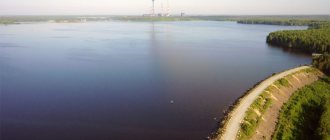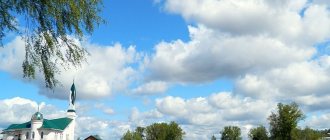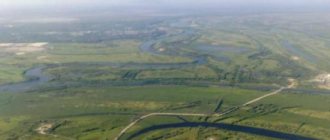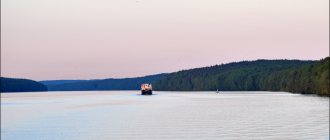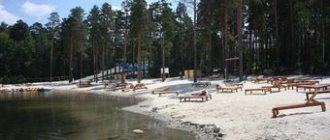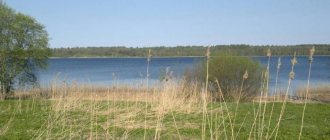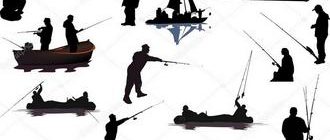deutschenglishespañolfrançaisहिन्दी
Fishing forecast > Russia > St. Petersburg > Lakhtinsky Razliv
Find out how the fish will bite in the Lakhtinsky Razliv lagoon in the coming days. The bite forecast takes into account the weather, moon phase, water temperature, and seasonal fish activity.
Lakhtinsky Razliv Lagoon on the map:
Expand the map
to zoom with the mouse wheel
Move this checkbox
| February 16 Tuesday | February 17 Wednesday | February 18 Thursday | February 19 Friday | February 20 Saturday | ||||||||||||||||
| time | night 02:00 | morning 08:00 | day 14:00 | evening 20:00 | night 02:00 | morning 08:00 | day 14:00 | evening 20:00 | night 02:00 | morning 08:00 | day 14:00 | evening 20:00 | night 02:00 | morning 08:00 | day 14:00 | evening 20:00 | night 02:00 | morning 08:00 | day 14:00 | evening 20:00 |
| Weather show weather hide weather | heavy snowfall | heavy snowfall | snowfall | snowfall | light snowfall | light snowfall | light snowfall in places | light snowfall | Supercooled fog | Haze | Partly cloudy | Partly cloudy | Partly cloudy | Partly cloudy | snowfall | heavy snowfall | heavy snowfall | heavy snowfall | heavy snowfall | heavy snowfall |
| air temperature, °C °F feels like, °C °F | −15 5° | −6 21° | −8 18° | −12 10° | −16 3° | −19 -2° | −16 3° | −20 -4° | −23 -9° | −25 -13° | −18 -0° | −19 -2° | −23 -9° | −16 3° | −11 12° | −10 14° | −11 12° | −12 10° | −9 16° | −9 16° |
| −18 -0° | −13 9° | −15 5° | −18 -0° | −22 -8° | −25 -13° | −23 -9° | −26 -15° | −28 -18° | −23 -9° | −25 -13° | −25 -13° | −22 -8° | −15 5° | −13 9° | −14 7° | −16 3° | −13 9° | −14 7° | ||
| water temperature, °C °F surface / depth | 1 34° / 2 36° | 1 34° / 2 36° | 1 34° / 2 36° | 1 34° / 2 36° | 1 34° / 2 36° | 1 34° / 2 36° | 1 34° / 2 36° | 1 34° / 2 36° | 1 34° / 2 36° | 1 34° / 2 36° | 1 34° / 2 36° | 1 34° / 2 36° | 1 34° / 2 36° | 1 34° / 2 36° | 1 34° / 2 36° | 1 34° / 2 36° | 1 34° / 2 36° | 1 34° / 2 36° | 1 34° / 2 36° | 1 34° / 2 36° |
| cloudiness, % | 100 | 100 | 100 | 100 | 71 | 100 | 89 | 82 | 93 | 71 | 32 | 18 | 19 | 61 | 100 | 99 | 88 | 100 | 99 | 92 |
| precipitation, mmin/6 h | 0.3 0.012 | 0.5 0.02 | 0.1 0.004 | 0.1 0.004 | 0 0 | 0 0 | 0 0 | 0 0 | 0 0 | 0 0 | 0 0 | 0 0 | 0 0 | 0 0 | 0.1 0.004 | 2 0.079 | 0.4 0.016 | 0.3 0.012 | 0.7 0.028 | 0.4 0.016 |
| wind | W western | W-N-W west-northwest | SW southwest | SS-E north-northeast | SS-E north-northeast | SS-E north-northeast | NE northeast | NE northeast | E-N-E east-northeast | E-S-E east-southeast | W western | W western | W western | W western | W-S-W west-southwest | South South | South South | SE southeast | SE southeast | E-S-E east-southeast |
| wind speed, m/s km/h mph / wind gusts, m/s km/h mph | 8 / 12 29 / 43 18 / 27 wind speed 8 m/s km/h mph, gusts up to 12 m/s km/h mph wind speed 29 m/s km/h mph, gusts up to 43 m/s km/h mph wind speed 18 m/s km/h mph, gusts up to 27 m/s km/h mph Very steep waves, stormy conditions on large bodies of water. | 6 / 9 22 / 32 13 / 20 wind speed 6 m/s km/h mph, gusts up to 9 m/s km/h mph wind speed 22 m/s km/h mph, gusts up to 32 m/s km/h mph wind speed 13 m/s km/h mph, gusts up to 20 m/s km/h mph Quite a steep wave, especially on large bodies of water. | 5 / 7 18 / 25 11 / 16 wind speed 5 m/s km/h mph, gusts up to 7 m/s km/h mph wind speed 18 m/s km/h mph, gusts up to 25 m/s km/h mph wind speed 11 m/s km/h mph, gusts up to 16 m/s km/h mph The waters are moderately rough. | 3 / 5 11 / 18 7 / 11 wind speed 3 m/s km/h mph, gusts up to 5 m/s km/h mph wind speed 11 m/s km/h mph, gusts up to 18 m/s km/h mph wind speed 7 m/s km/h mph, gusts up to 11 m/s km/h mph Slight water disturbance. | 3 / 5 11 / 18 7 / 11 wind speed 3 m/s km/h mph, gusts up to 5 m/s km/h mph wind speed 11 m/s km/h mph, gusts up to 18 m/s km/h mph wind speed 7 m/s km/h mph, gusts up to 11 m/s km/h mph Slight water disturbance. | 2 / 4 7 / 14 4 / 9 wind speed 2 m/s km/h mph, gusts up to 4 m/s km/h mph wind speed 7 m/s km/h mph, gusts up to 14 m/s km/h mph wind speed 4 m/s km/h mph, gusts up to 9 m/s km/h mph Slight water disturbance. | 3 / 4 11 / 14 7 / 9 wind speed 3 m/s km/h mph, gusts up to 4 m/s km/h mph wind speed 11 m/s km/h mph, gusts up to 14 m/s km/h mph wind speed 7 m/s km/h mph, gusts up to 9 m/s km/h mph Slight water disturbance. | 2 / 4 7 / 14 4 / 9 wind speed 2 m/s km/h mph, gusts up to 4 m/s km/h mph wind speed 7 m/s km/h mph, gusts up to 14 m/s km/h mph wind speed 4 m/s km/h mph, gusts up to 9 m/s km/h mph Slight water disturbance. | 1 / 3 4 / 11 2 / 7 wind speed 1 m/s km/h mph, gusts up to 3 m/s km/h mph wind speed 4 m/s km/h mph, gusts up to 11 m/s km/h mph wind speed 2 m/s km/h mph, gusts up to 7 m/s km/h mph Water bodies are calm. | 1 4 2 wind speed 1 m/s km/h mph wind speed 4 m/s km/h mph wind speed 2 m/s km/h mph Water bodies are calm. | 2 7 4 wind speed 2 m/s km/h mph wind speed 7 m/s km/h mph wind speed 4 m/s km/h mph Slight water disturbance. | 3 / 5 11 / 18 7 / 11 wind speed 3 m/s km/h mph, gusts up to 5 m/s km/h mph wind speed 11 m/s km/h mph, gusts up to 18 m/s km/h mph wind speed 7 m/s km/h mph, gusts up to 11 m/s km/h mph Slight water disturbance. | 3 / 6 11 / 22 7 / 13 wind speed 3 m/s km/h mph, gusts up to 6 m/s km/h mph wind speed 11 m/s km/h mph, gusts up to 22 m/s km/h mph wind speed 7 m/s km/h mph, gusts up to 13 m/s km/h mph Slight water disturbance. | 3 / 5 11 / 18 7 / 11 wind speed 3 m/s km/h mph, gusts up to 5 m/s km/h mph wind speed 11 m/s km/h mph, gusts up to 18 m/s km/h mph wind speed 7 m/s km/h mph, gusts up to 11 m/s km/h mph Slight water disturbance. | 2 7 4 wind speed 2 m/s km/h mph wind speed 7 m/s km/h mph wind speed 4 m/s km/h mph Slight water disturbance. | 1 / 2 4 / 7 2 / 4 wind speed 1 m/s km/h mph, gusts up to 2 m/s km/h mph wind speed 4 m/s km/h mph, gusts up to 7 m/s km/h mph wind speed 2 m/s km/h mph, gusts up to 4 m/s km/h mph Water bodies are calm. | 1 / 2 4 / 7 2 / 4 wind speed 1 m/s km/h mph, gusts up to 2 m/s km/h mph wind speed 4 m/s km/h mph, gusts up to 7 m/s km/h mph wind speed 2 m/s km/h mph, gusts up to 4 m/s km/h mph Water bodies are calm. | 2 / 3 7 / 11 4 / 7 wind speed 2 m/s km/h mph, gusts up to 3 m/s km/h mph wind speed 7 m/s km/h mph, gusts up to 11 m/s km/h mph wind speed 4 m/s km/h mph, gusts up to 7 m/s km/h mph Slight water disturbance. | 3 11 7 wind speed 3 m/s km/h mph wind speed 11 m/s km/h mph wind speed 7 m/s km/h mph Slight water disturbance. | 3 / 4 11 / 14 7 / 9 wind speed 3 m/s km/h mph, gusts up to 4 m/s km/h mph wind speed 11 m/s km/h mph, gusts up to 14 m/s km/h mph wind speed 7 m/s km/h mph, gusts up to 9 m/s km/h mph Slight water disturbance. |
| pressure mm. Hg Art. inch Hg Art. hPa | 756 29.76 1008 | 751 29.57 1001 | 753 29.65 1004 | 757 29.8 1009 | 758 29.84 1011 | 760 29.92 1013 | 760 29.92 1013 | 762 30 1016 | 763 30.04 1017 | 764 30.08 1019 | 765 30.12 1020 | 763 30.04 1017 | 763 30.04 1017 | 760 29.92 1013 | 760 29.92 1013 | 760 29.92 1013 | 760 29.92 1013 | 761 29.96 1015 | 762 30 1016 | 762 30 1016 |
| humidity, % | 89 | 93 | 87 | 93 | 95 | 98 | 90 | 97 | 99 | 97 | 86 | 93 | 92 | 91 | 90 | 96 | 96 | 96 | 93 | 96 |
| Moon phase | Young Moon age: 5 days illumination: 17% distance: 403 thousand km. | Young Moon age: 5 days illumination: 25% distance: 405 thousand km. | First quarter age: 6 days illumination: 33% distance: 405 thousand km. | First quarter age: 7 days illumination: 43% distance: 405 thousand km. | First quarter age: 8 days illumination: 52% distance: 404 thousand km. | |||||||||||||||
| moonrise—moonset | 10:07—23:42 | 10:12—03:00 | 10:18—01:01 | 10:26—02:21 | 10:38—03:42 | |||||||||||||||
| sunrise—sunset | 08:34—17:53 | 08:31—17:56 | 08:28—17:58 | 08:25—18:01 | 08:22—18:03 | |||||||||||||||
| length of day | 09:19 | 09:25 | 09:30 | 09:36 | 09:41 | |||||||||||||||
| hours of sunshine per day | 3.4 | 3.5 | 8.7 | 3.7 | 3.7 | |||||||||||||||
| UV index | 1 minor UV radiation | 1 minor UV radiation | 1 minor UV radiation | 1 minor UV radiation | 1 minor UV radiation | |||||||||||||||
| fish bite 0-100% | ||||||||||||||||||||
| Add: | ||||||||||||||||||||
Lakhtinsky Razliv: general characteristics
This wonderful place is probably known to all residents of St. Petersburg. The spill is located within the city. It is located in the Primorsky district. This lake has been known for a long time; many city residents like to relax here. It is also worth noting that the reservoir is located on the shore of the Neva Bay, but it is separated from the lip by a sand embankment. There are railway tracks on it, and the Primorskoe Highway also runs here.
I wonder where the name Lakhtinsky Razliv came from. There is a version that it is derived from the Finnish word lahti, which means bay or bay. Thus, it becomes clear why the lake is named this way.
It is worth saying a few words about the size of the reservoir. The Lakhtinsky Razliv is a fairly large body of water. It covers an area of about 1.8 square meters. km. Its length is about 2.5 kilometers, width - 1.5 kilometers. As for the depth of the reservoir, on average it is just over 4 meters, and in the deepest place it is about 8.3 meters. Thus, we can say that the lake is quite large.
Lakhtinsky Razliv fishing and types of fish
Lakhtinsky Razliv is a lake located on the northern side of the Neva Bay. It is separated from the Neva Bay itself by a sandy embankment along which the Primorskoye Highway and the Sestroretskaya railway line run.
The rivers Glukharka, Yuntolovka and Kamenka flow into the lake, and the Bobylka River flows out, connecting the Lakhtinsky Razliv with the Neva Bay. The lake itself is considered a lagoon-estuary. In appearance it resembles a trapezoid, its area is 1.8 sq. km.
The maximum width reaches one and a half kilometers, and the length is 2.5. At the same time, Lake Lakhtinsky Razliv is quite deep. Its average depth reaches 4.3 meters, in some places - 8.3 m (in the central part), and the maximum pits reach 15 - 18 meters.
Where is the spill?
This issue was touched upon a little above, but it is worth talking about the place where the Lakhtinsky Razliv is located in more detail. As you know, it is located in the Primorsky district. Several rivers flow nearby. Some of them flow into the reservoir - these are Kamenka, Glukharka and Yuntolovka. In addition to the listed rivers, various drains and ditches are formed here at different times of the year.
It is also necessary to talk about what the shores of the reservoir look like. Here you can often see marshy areas, abundantly overgrown with various types of reeds and reeds. Interestingly, the spill is of the lowland type, which is why there are so many swamps here.
There is also a small channel here. It connects the reservoir with the Neva Bay. Its length is about 500 meters. The 1st Lakhtinsky Bridge passes over it, which has existed for more than 60 years.
Nearby there is a village called Lakhta and a whole complex of wastewater treatment plants. However, this is not all that the Primorsky district can boast of. St. Petersburg also includes a large forested area called the Yuntolovskaya Forest Dacha. This is another unique natural site. We will talk about it a little later. Thus, we got acquainted with the place where the lake is located. Lakhtinsky Razliv is quite popular among vacationers. There are also several interesting places nearby that attract many tourists.
Lakhtinsky Razliv
The name of the lake itself - “Lakhtinsky Razliv” - comes from the old Finnish name Konnunlahti, which means “Manor Bay”. The place is very popular for amateur fishermen in the Primorsky region - getting to it, and especially to the eastern shore, is no problem. By and large, both the southern and western shores are accessible to anyone with rubber boots. Since Razliv connects with the Gulf of Finland, the variety of fish in the lake is great, but what attracts me most is catching bream with float tackle, which is what we will discuss.
Somehow it turned out that the simplest Bolognese fishing rod works more efficiently for me on Razliv - in any case, I beat the feeder, and more than once. The only “but” that you should immediately pay attention to is that the rod must be equipped with a sliding float (waggler), because fishing takes place from depths of more than five meters - and with a float rigidly fixed to the fishing line, it is almost impossible to deliver the equipment to the fishing spot.
When the waggler is correctly loaded, it is very interesting to watch the bites of the bream “on the rise”. You look at the float and imagine what is happening at the bottom, how the fish grabs and throws the bait, how it swallows it and goes on about its business. And if the waggler fully rose, and even fell - the height of bliss! To achieve a similar effect, I make leashes in the area of half a meter from monofilament fishing line with a diameter of 0.12 - 0.14 mm, placing on them up to five of the smallest pellets (“pods”).
Ultra-long casts are not required, the landscape of the reservoir is such that the working depths are located quite close to the shore, but “inertia-free” casting will be needed in any case, unless, of course, you are an expert in using wire reels.
Active fishing for white bream (I personally have never come across more than two hundred kilograms) begins in June. At one time, I noticed one pattern: in early June, on the western shore from the village of Lakhta, the process is already in full swing, while on the eastern shore, the biting begins a week or two later.
The by-catch often includes good-sized silver bream, roach, and the ubiquitous ruff. And several times a sabrefish “flew in” as the bait fell. It is much more difficult to navigate by the time of the start of the bite. There were captures at four in the morning, and it happened that you sat until nine in the morning - and it was like in the bathroom. And then the flock starts feeding - and until eleven o’clock the bite is stable, despite the rising sun and fairly hot weather. In the evening, I never had a good catch - isolated and apparently random catches, plus a silver bream.
The fish must be fed well and tasty - competition on the shore is high, various bream mixtures are used. For starter feeding, I sometimes added steamed millet to increase volume and viscosity. But subsequent supplementary feeding was carried out exclusively with purchased mixtures, so that the fish did not become oversaturated and did not lose interest in the bait, the best option for which was the usual “sandwich” of several maggots and dung worms.
Among the additional devices that can be useful when fishing are a good and spacious fish tank to preserve your catch in the summer heat and stands for fishing rods (slingshots). And also landing nets, but this is a matter of personal experience; for me, there are no difficulties in picking up a fish with my hand. Rubber boots, as I wrote above, are a must; there are very few dry places along the banks and they are practiced in the very morning, or even in the evening, because the bank is muddy and muddy in places.
If you approach fishing correctly, you can catch it with dignity, despite the apparent accessibility of the reservoir. But what to do with the catch is a personal matter for each individual fisherman: some will let go of everything, some will let go of the excess, but for me, smoked or cooked in the oven and in foil, the bream is very good!
History of the reservoir and its appearance
Now it’s worth paying attention to the history of the spill. According to many sources, this reservoir 100 years ago was not as big as it is now. The depths of the Lakhtinsky spill at the beginning of the 20th century averaged no more than 2.5 meters. A lot of time has passed since then, and the topography of the bottom of the reservoir has changed a lot. Despite the fact that the depth at that time was less, the area of the water surface itself was much larger. It is known that at that time the size of the spill was about 13 square meters. km. Such changes occurred due to the large development of the northern part of the Neva Bay. For these purposes, it was actively washed. Thus, we see that over the past 100 years the reservoir has changed significantly. This applies not only to its depth and area, but also to many other, less noticeable components, such as flora and fauna.
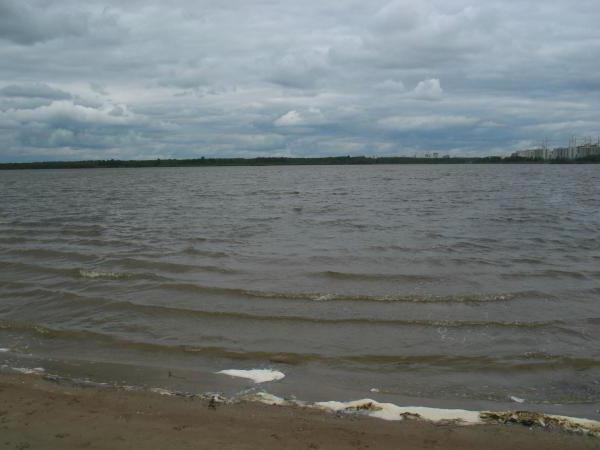
A healthy spirit of adventure
As we see, the lack of a car for a fisherman is not a reason not to discover new places, not to explore bodies of water, not to embark on adventures and adventures! And the complaints of some colleagues that there is nowhere to go without a car are not entirely appropriate.
It’s just their desire for “freebies”, I can’t say it any other way - for them to bring it, take it away, and even have a place
the fishiness is highlighted - sometimes it overpowers everything else. But you just need that same passion of a fisherman, a sincere desire to spend time fishing. And if it is present - excitement, then no problems should arise. The main thing is to overcome your own laziness and take risks, because the result can be very pleasant! And three or four hours to the reservoir by public transport will seem like just a prelude to the main action...
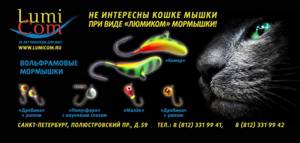
Recreation and fishing on this reservoir
Of course, many have already become interested in the Lakhtinsky spill. This is not surprising since it is great for a variety of recreational purposes. Many people who often visit the Primorsky region know about the existence of the lake. St. Petersburg can boast of such a wonderful place for relaxation; fishing enthusiasts can often be found here.
Until recently, this body of water was not very suitable for fishing. This was mainly due to the fact that a large number of networks were installed here. Due to this, it was impossible to fish with a spinning rod. Due to poaching, the fish population in the Lakhtinsky Razliv has noticeably decreased. However, recently the reservoir has been closely monitored, and special raids are periodically conducted to combat illegal fishing methods. Thanks to such measures, the number of fish in the reservoir increases. Sometimes quite large individuals are found here.
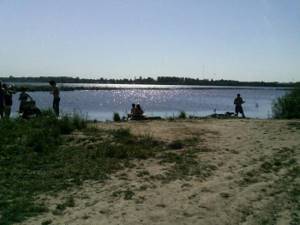
Map of the depths of the Lakhtinsky spill
Lakhtinsky Razliv is a lake in the Primorsky district of St. Petersburg, on the northern shore of the Neva Bay. The lake belongs to the Baltic Sea basin; the rivers Yuntolovka, Kamenka and Glukharka flow into it. The Bobylka River is a channel connecting the Lakhtinsky Razliv and the Neva Bay. The lake belongs to the lagoon-estuary type.
On the western shore of the lake there is the village of Lakhta, on the northwestern shore there is a complex of wastewater treatment plants, on the northern shore there is the Yuntolovskaya forest dacha, and on the eastern shore there are the quarters of the Komendantsky airfield.
Lakhtinsky Razliv has a hydraulic connection with the Gulf of Finland. The lake is separated from the Neva Bay by a sandy embankment, along the fortified part of which the Sestroretsk railway runs. line and Primorskoye Highway. The name comes from the Finnish “lahti” - bay, bay. The Lakhtinsky Razliv is a lagoon-shaped reservoir of irregular trapezoidal shape, protruding deeply into the mainland territory. The basin extends from northwest to southeast. The area of the water surface is 1.8 km². Length - 2.5 km, maximum width - 1.5 km. The average depth is 4.3 m, the greatest depth is 8.3 m. The northern part of the Lakhtinsky Razliv is shallow (depths up to 4 m), the depth gradually increases towards the central part. The bottom of the lake is extremely mosaic, disturbed by depressions and elevations (fluctuations from 0.5 m to 5 m). The rivers Kamenka, Yuntolovka, Glukharka flow into the Lakhtinsky Razliv, as well as a number of temporary watercourses and drainage ditches flowing from swamps. The Yuntolovka and Glukharka rivers are bays of the Lakhtinsky Razliv. The channel, about 500 m long, connecting the Lakhtinsky Razliv with the Neva Bay, is called the Bobylka River along the Bobylskaya Sloboda, as the north-eastern part of Lakhta was previously called between the Lakhtinsky Razliv, Novaya Street and the railway. In the 19th century, bobyls were settled here - retired soldiers who had no relatives left and had nowhere to return. The 1st Lakhtinsky Bridge along the Primorskoye Highway spans the channel. The name of the bridge originated in the 1950s, although the bridge was built much earlier. Derived from the name of the village of Lakhta. There is also a 2nd Lakhtinsky Bridge - it spans an unnamed stream along Primorskoe Highway at the intersection of Shkolnaya and Yakhtennaya streets. The banks of the Lakhtinsky Razliv are low-lying, swampy, partially occupied by thickets of reeds and reeds. The lake has the status of eutrophic (lowland). During surges of water from the Neva Bay, the water level in the Lakhtinsky Razliv rises almost 3 meters above the low-water level. On the western shore of the lake there is the village of Lakhta, a tree nursery, estate development, and gardening. In the north-west there is a complex of wastewater treatment facilities, in the north there is the Yuntolovskaya forest dacha forest, and blocks of new housing construction approach the eastern bank. A railroad and highway run along the southern shore, as well as utility warehouses.
What kind of fish is in the lake?
Probably, many fishing enthusiasts are interested in what can be caught in the Lakhtinsky Razliv? It is worth considering this issue in detail. At different times of the year, the likelihood of meeting different species of fish here increases. For example, in the spring, crucian carp is most often caught in the reeds. You can also find silver bream. In rare cases, fish such as ide and tench are caught.
Most often, those who like to sit on the shore with a fishing rod catch pike, perch, bream, and crucian carp. There is also a lot of fish in the pond, such as bleak.
So, we see that this place is great for purposes such as recreation and fishing. Often the whole family comes here to spend a day off in nature and enjoy the fresh air within the city.
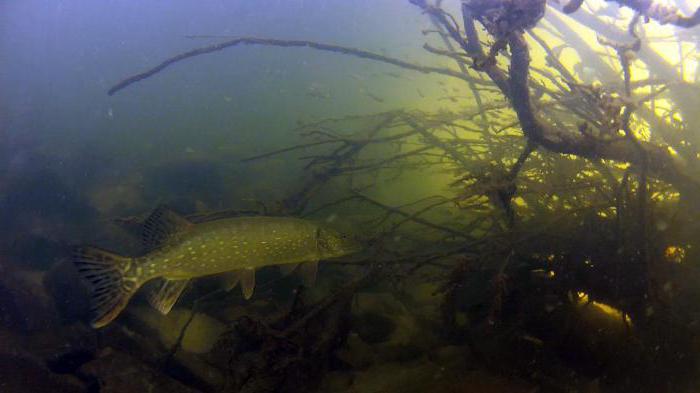
Where is the best place to catch?
Any fishing enthusiast knows that for a good catch on any body of water you need to know certain places. Such secrets also exist on the Lakhtinsky Razliv. The first thing you should pay attention to is that the lake is quite popular, so when going here on a day off, it is better to leave in advance. Otherwise, finding a place can become quite a long task. It should also be chosen taking into account the direction of the wind. Often fishermen can be seen from the village of Olgino. Those who prefer feeder fishing should pay attention to another place where a river called Glukharka flows into the lake. There are also good places on the Yuntolovka side. The best way to fish here is with a spinning rod. Fish such as pike, perch, pike perch, etc. are often found.
The lake is also suitable for winter fishing enthusiasts. During the cold season, there is a high chance of catching perch. However, summer and autumn are the best seasons to visit Lakhtinsky Razliv. Fishing at this time is of the greatest interest and is most often accompanied by a rich catch.

